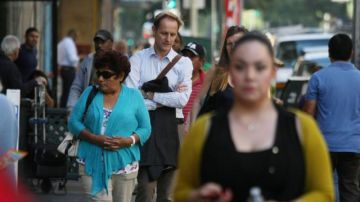Editorial: Latino California
These numbers represent a challenge for Latinos and for California in general.

Latinos en el centro de Los Ángeles. Crédito: J. Emilio Flores | La Opinion
SPANISH VERSION
The Census Bureau this week confirmed what has been said: Latinos now make up the largest population group in California. Or, in other words, no single race or ethnic group holds the absolute majority in our state. This has serious implications for the present and the future.
This demographic change has been slow but unstoppable marked by significant moments of transformation. One such moment happened in July 2014 when the numbers of Latinos reached 14.99 million compared to 14.94 million whites. According to observers, this growth has less to do with immigration and more to do with the families established by the second and third generations of these immigrants. This counters the anti-immigrant theories that blame the population increase on unsecured borders.
These numbers represent a challenge for Latinos and for California in general.
For Latinos, the population growth is out of sync with political representation because of the gap the exists between those who live in the state and those who are voters. Partly this difference owes to the large number of undocumented Hispanics, but it also has to do with the large number of legal residents who don’t even dare seek citizenship. Yet, in the case of Mexico and other countries, doing so does not mean renouncing one’s birth land. In addition we need to get citizens of voting age to register and go to the polls.
The demographic shift also presents a challenge to California since it must integrate Latinos as fully as possible in order to thrive without creating a caste system. Legalizing driver’s license for the undocumented was one important step to enable their participation in the economy. Accepting that legal residents can work at the polls offers them a role in the electoral system. Meanwhile Governor Brown vetoed having residents serve on juries but voting in local elections, such as for school districts, has been under consideration.
In setting priorities California must take into account the demographic reality and work in order to prepare and incorporate Latinos fully in this society because the of Californians are Latinos, with or without papers.




